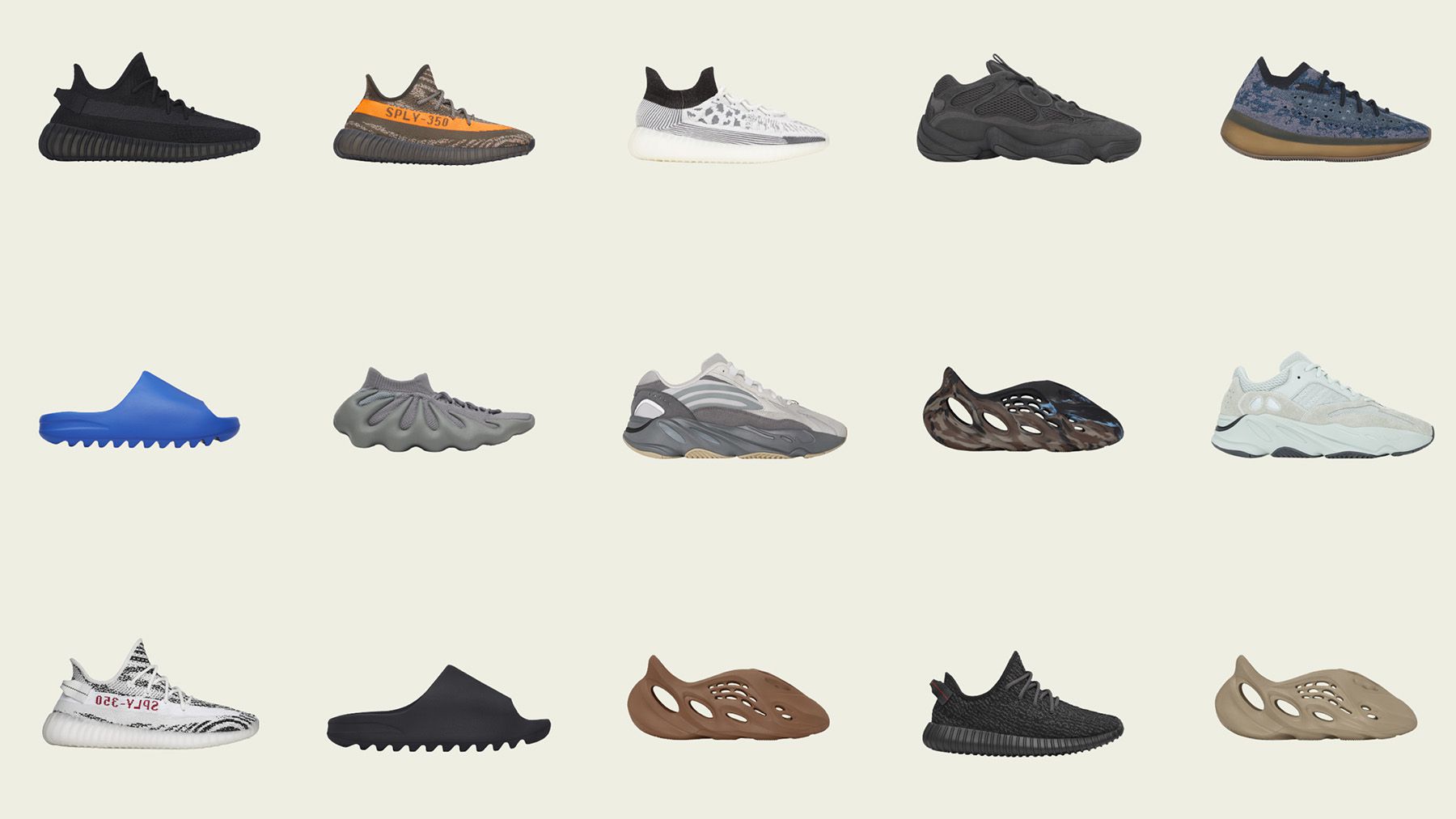
However shoppers feel about Ye himself, they haven’t cooled on Yeezy sneakers.
Last week, Adidas reported that sales from the first drop of its remaining Yeezy inventory in May were so strong they helped brighten the company’s gloomy outlook for the year. It now anticipates an operating loss of €450 million ($498 million) in 2023, versus its previous forecast of €700 million.
While Adidas noted its underlying business is performing better than expected — the Samba sneaker has been a fashion favourite lately — the company received orders worth more than $565 million for 4 million pairs of Yeezy footwear, surpassing its most optimistic estimate, The Financial Times reported.
“If successful, potential future Yeezy drops would further improve the company’s results,” Adidas said in a release.
A second batch of sales is slated for this month, with some of the shoes to be sold through select wholesale partners this time. Investors will surely be looking for more updates on Yeezy as well as how it’s managing its catalogue of classics and its China business when the company reports first-half earnings on Thursday. Its stock closed up nearly 4 percent the day it provided its Yeezy update.
The German sneaker giant faced a tough situation following its decision to cut ties with Ye last year amid the rapper’s increasingly inflammatory comments. It halted sales of Yeezy products and directed its retail partners to do the same, leaving a pile of unsold merchandise worth €1.2 billion on its hands. After considering its options, including destroying or liquidating the shoes, the company opted to sell the goods through its channels and donate a share of the proceeds to charities that combat hate speech.
Still, it was unclear whether shoppers would scoop them up as eagerly as before. Yeezy sneakers are as tied to Ye as Jordans are to Michael Jordan. Would consumers really pay for shoes associated with the besmirched star? And would Adidas face backlash for selling them?
“Both of those questions were answered favourably for Adidas,” said Tom Nikic, an analyst at Wedbush Securities.
It raises the question of whether Adidas will, as it has considered, eventually release Yeezy designs under its own brand without the Yeezy name attached. In Nikic’s view, the results of the recent drop suggest consumers may associate Yeezy less with Ye as time passes and focus on the shoes themselves.
Still Buying Yeezys
Certainly not all shoppers are willing to put aside Ye’s behaviour. One former fan made headlines last year for posting videos in which he burned several pairs of Yeezy sneakers following Ye’s antisemitic comments.
But a few factors likely contributed to the success of the drop. For one, Nikic pointed out that Adidas always relied on a scarcity strategy for Yeezy, making sure demand outstripped supply. Even if a number of shoppers turned away from the brand over the past several months, there was still a large amount of unsatisfied demand. Not only that, consumers recognised this could be their last chance to get their hands on new Yeezy sneakers at their retail price, rather than having to pay a premium on the secondary market.
The sales also show that plenty of customers are either willing to overlook Ye’s actions or now think of Yeezy as a brand apart from its founder. Ye’s music and celebrity played an undeniable role in the success of Adidas’ Yeezy line, but sneaker fans also genuinely like the products themselves. The brand’s most ubiquitous sneaker, the Yeezy Boost 350 — based on Ye’s attempt to outdo Nike’s Roshe Run — has the Roshe’s minimal feel, but the ridged sole, colour options and knit designs of the upper give it enough personality to be distinctive. The Yeezy Boost 700 is a sleek, dynamic update on a chunky running sneaker. Even the extraterrestrial Foam Runner has carved a niche amid the popularity of foam clogs, otherwise dominated by Crocs.
“There’s a cachet attached to wearing those shoes and I think that has outpaced whatever disappointment consumers had with Kanye West’s commentary,” Nikic said. “Fashion and the quality of the shoes won out.”
Yeezy Resale
On the secondary market, demand for Yeezy footwear has remained solid. Numerous styles have continued to sell at or above their retail value on resale sites, which in itself suggested any additional drops would be a success.
The May release sparked a new rush of sales. In the two weeks that followed, trades of Yeezy sneakers on StockX were up 175 percent compared to the previous two-week period, according to Drew Haines, StockX’s merchandising director for sneakers and collectibles. While prices have since moderated, as typically happens after a release, Haines noted they remain much higher than in the first part of the year. He believes Yeezy products could see sustained demand even after Adidas has sold through the last of its stock.
It’s clear shoppers are still eager for existing Yeezy items. Online sneaker accounts such as Sneaker News, Nice Kicks, The Site Supply and Complex Sneakers have been closely following the updates from Adidas and relaying information about forthcoming drops, just like they did before Adidas parted ways with Ye.
Adidas sold through about 20 percent of its remaining inventory during the May release, according to Nikic. By all indications, future drops look set to sell out as well.


